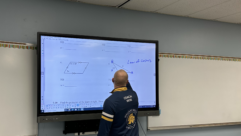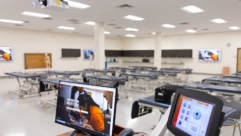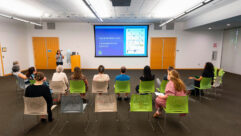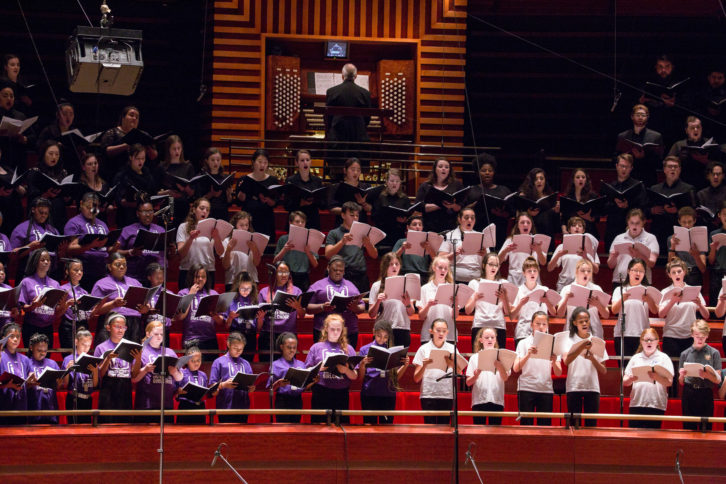
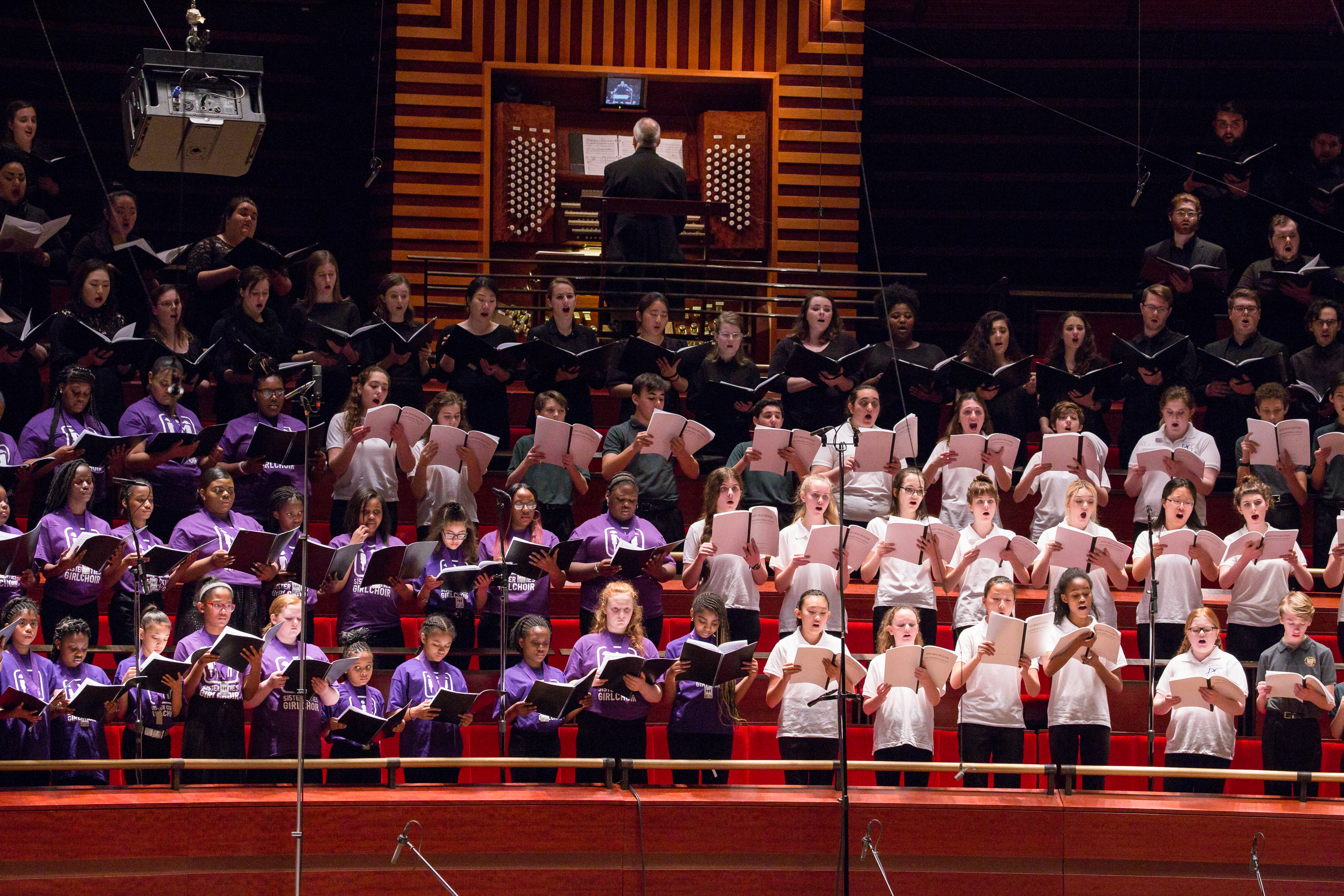
Commissioned by the Philadelphia Orchestra, and supported by local choirs, Philadelphia Voices is part of Tod Machover’s movable feast, City Symphonies. Performed in the city’s Verizon Hall in the Kimmel Center (and later at Carnegie Hall NYC), the recital counterposed recordings from the everyday lives of Philadelphians within the envelope of Machover’s dense score for orchestra and voice. “That is part of Tod’s genius,” said Ben Bloomberg, Machover’s technical and artistic collaborator, and the man charged with resolving the technical obstacles to Machover’s creative intent. “We have so many recorded sounds, the challenge is to find the spatial resolution to place each element without it feeling crowded. Tod wanted his audience to be able to zoom in on each sound individually, whether voice, instrument or recording, as you would do at a natural, unamplified concert. It is d&b Soundscape that provided the width and space to make this possible.”
“We are presenting a live performance in a reverberant concert hall with full orchestra, 350 voices, and the collected sounds of the city,” was Bloomberg’s succinct description. “The biggest challenge, and what I do a lot for Tod, is to integrate the sounds of the recordings with the acoustic performance of the orchestra and choir: we are focused on the placement of sounds, and we have to make those sounds feel natural and integrated.”
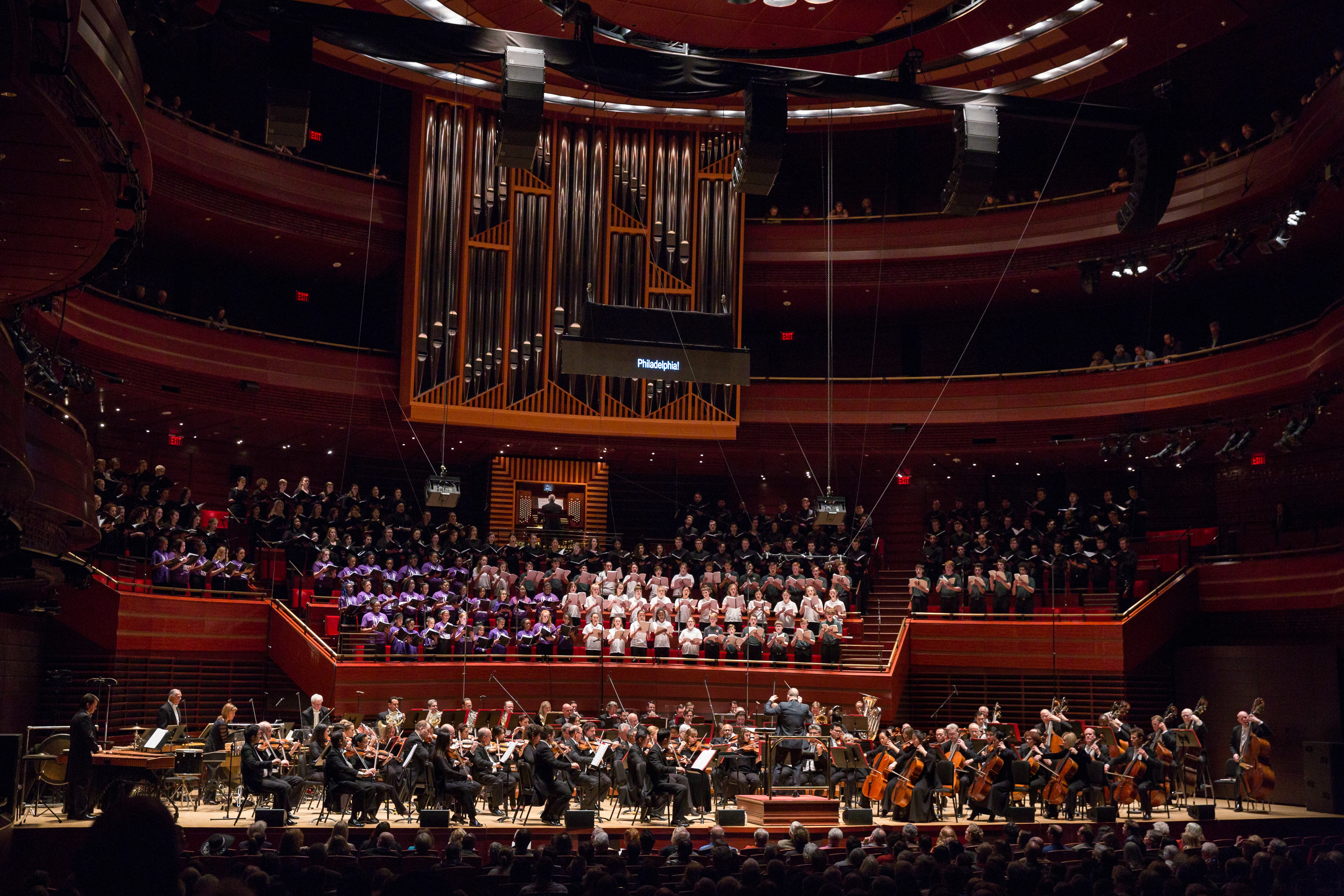
Bloomberg engaged the services of Specialized Audio Visual Inc. (SAVI), an audio specialist well known to the orchestras of Massachusetts, not least for their work on the Boston Symphony at Tanglewood each summer. Their project manager for Philadelphia Voices, Matt Bell, describes the technical challenges and begins to unfold exactly what Bloomberg meant by ‘Soundscape.’ “Verizon [Hall] seats 2,500 people; it’s not a deep auditorium but is quite tall. The system we installed for Tod was small for a room this size, mostly d&b Y-Series loudspeakers with a few E6 for front fills and V-SUBs for low end support, all powered by D20 amps with a Yamaha CL5 out front. We used d&b DS10 for breakouts, and had a DS100 in the middle. The DS100 is the matrix and signal processing platform of the d&b Soundscape system.
“Soundscape has two optional software modules: En-Space enables the addition of room emulation reverberation signatures to any space, and En-Scene, which is what we used at Verizon. At its simplest, En-Scene is an object positioning tool; more specifically it allows the placement or movement of up to sixty-four sound objects. This was a 180-degree rendering of Soundscape; just five line arrays—all Y8s—set across the top of the concert stage were needed. There was no surround system. The orchestra was un-mic’d, so completely natural, the choir was mic’d, and there were the recordings all of a piece. Tod and Ben have a unique approach; most of the recorded material is crowdsourced, they created a phone app which allowed the whole city to contribute, and they did record some things themselves.”
In an online video, Machover describes recording a Philadelphia icon, the Philly cheesesteak being cooked at Pat’s King of Steaks. “Not only did they let me put my microphone almost on the griddle when the cheesesteaks were sizzling, the cook tried to tell me that the cheesesteaks weren’t so bad for you. That’s all part of the score.”
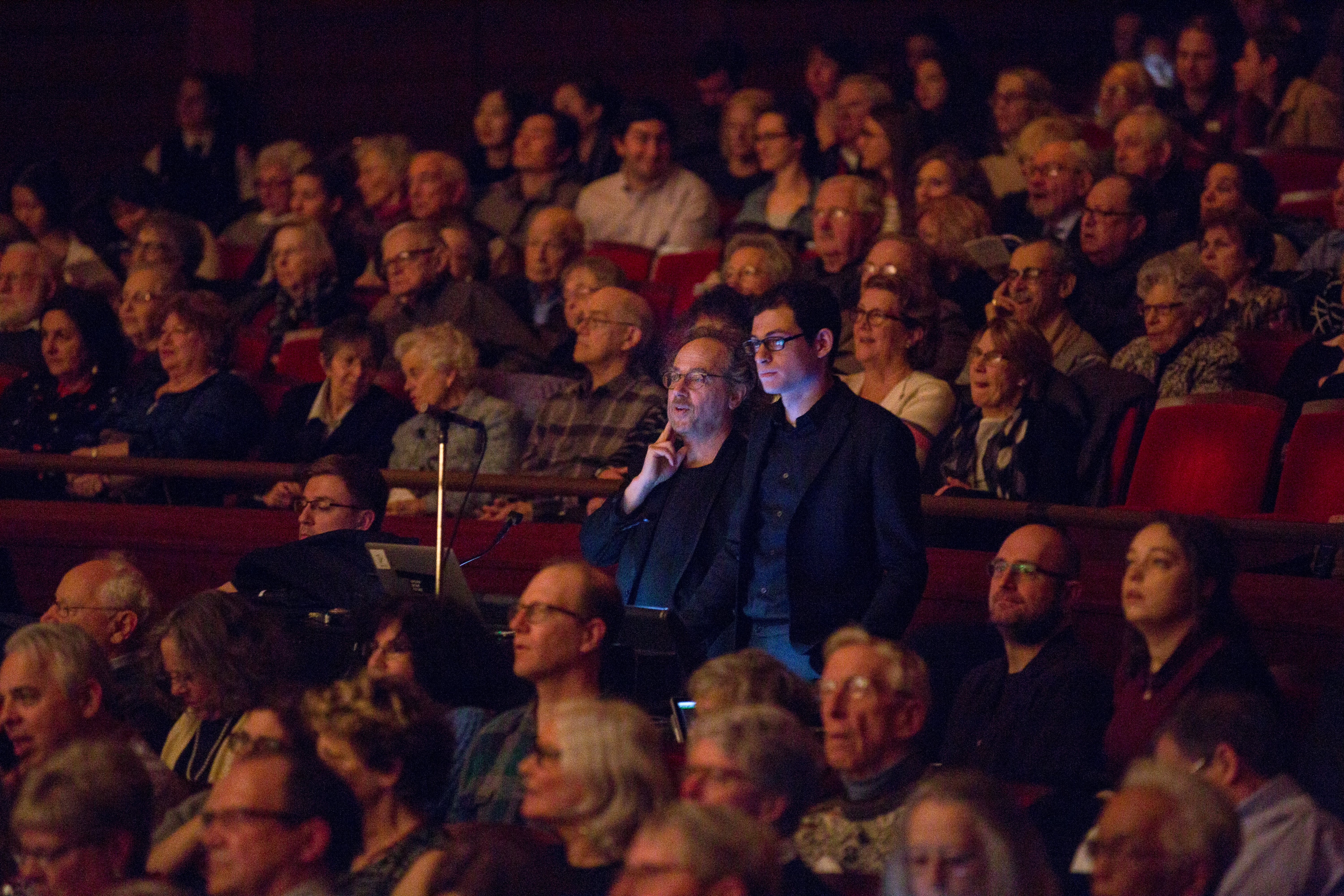
How Bloomberg dealt with that one instance is revealing of the whole artistic ethos. “The recordings were positioned virtually in space around the orchestra; the choir mics positioned according to their real life location on stage. As an example, even with the sopranos upstage left, the reinforcement is incredibly natural with the PA all but disappearing, even while adding serious SPL. Many of the field recordings were binaural, so we were able to put the audience inside the experiences that Tod captured. For the cheesesteak, you’d experience the voice of the cook on center; the noise of cooking in the background moved around as things were flipped or scraped on the griddle. The cook moved in front of the sizzling food and that changed the way you’d hear those noises. In the auditorium, that’s exactly how you experienced it, as if you were in the position Tod stood in when he made the recording. For the choir, what you saw is what you heard, so too with the orchestra. And although one was live, the other through the system, they both sounded entirely natural. This was not easy; we put a lot of care into the assembly and placement of the three elements in the mix, to ensure there is always something to focus on. In that sense Soundscape was fantastic in allowing the audience to engage in intimate fashion with the performance.
“That’s what separates Soundscape from similar products on the market. I’ve worked with many of those systems over the years; often you get a good delay matrix or a good panner, but not the two together. With Soundscape you do, and it is integrated with a 3D model of the room in d&b ArrayCalc, so it’s the best of all worlds. The balance of delay and panning is especially difficult in a concert hall which is not meant for amplified music. For one part of the piece, Tod needed the audience to be able to find and listen to a single voice in the choir – it was possible to pick her right out of the crowd of 350 singers because your ears told you where to look. Soundscape does that so well; it would have never worked with other systems.”
Like Bloomberg, this was also Bell’s first full hands-on use of d&b Soundscape. “There are some ‘gotcha’s that need to be learned,” he said. “The naming conventions can appear unfamiliar, especially to someone who is not a regular d&b user, or if they are unfamiliar with ArrayCalc and R1 that can be a bit daunting. But for a regular user, the classic d&b Workflow just falls into place. And there are a lot of good visual clues for a new user: choosing a source for example is easy. Ben and I had the idea to introduce a one-click on/off to the Soundscape system to A/B the listening experience. It was intense.”
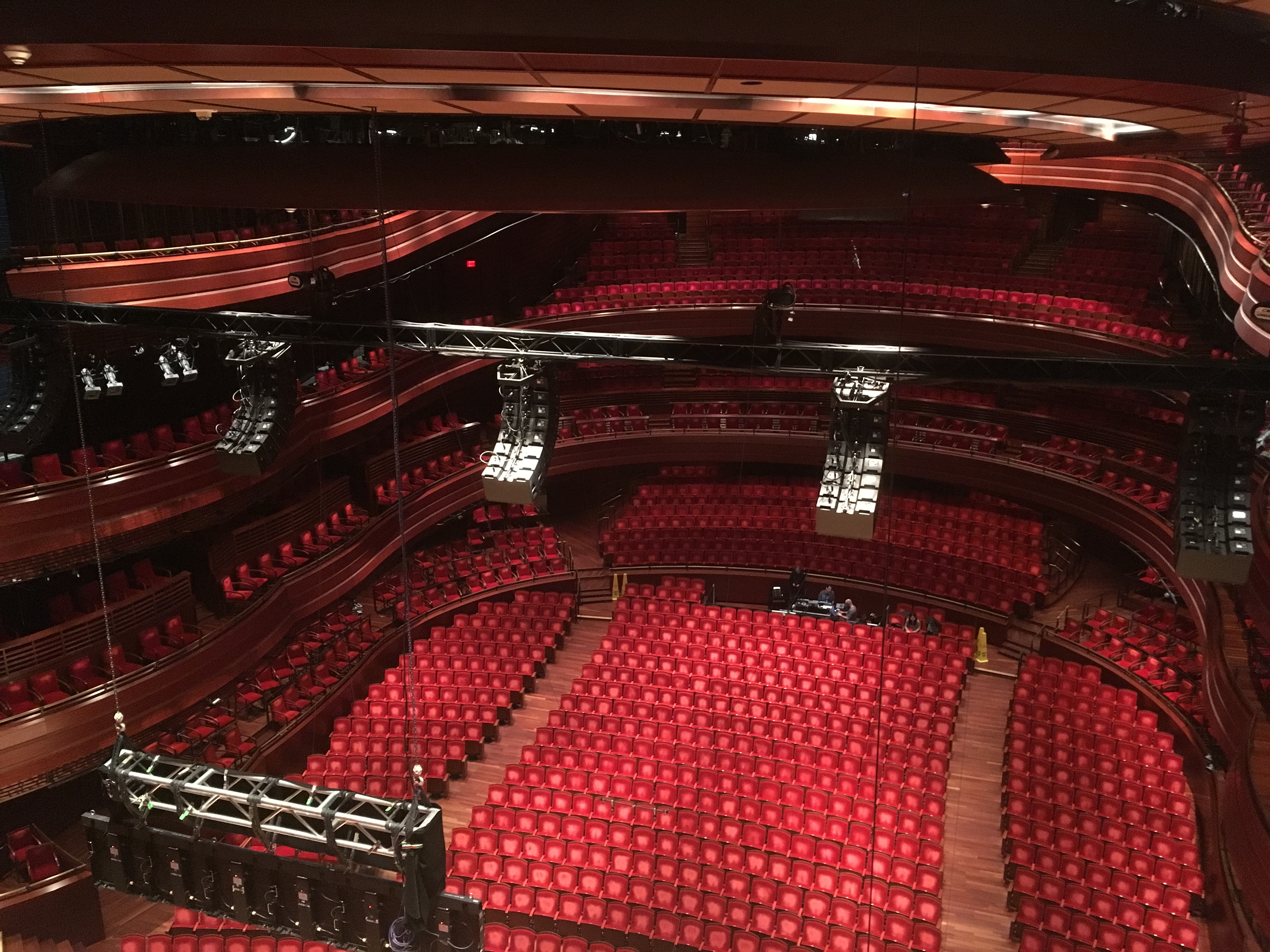
Bloomberg agreed, “It was incredible, the Soundscape imaged version was just amazing. As we discovered, even a single voice could be picked out.” To which Bell added a coda, “Tod came in later and we A/B’d it for him. He just lit up. It’s a very compelling experience, but underlines a point. It’s important to understand that if you walk into a Soundscape environment it’s very easy to take what you hear for granted: because it is so natural. So, hearing it switched out is a way to emphasize how potent that deception is.
“In my experience, that’s what separates it from existing products,” concluded Bloomberg. “It is the best comprehensive solution for system control and spatialization.”
Product at Work:
D&B SOUNDSCAPE
Combining d&b loudspeaker systems with processing power, object-based mixing and room emulation, this toolkit enables the creation of a spatial listening experience unique to the room.


